
1. What is Laminate Flooring?
Laminate flooring is a popular flooring solution which has itsorigin as a humble kitchen countertop material in Europe. It was introduced in North America about 2 decades ago and the brand Pergo quickly became a household name.
Laminate is technically made up of several layers with a wood veneer, thick polyurethane finished top layer and moisture resistant back layer.
These type of flooring materials are designed to mimic wood surface and better deal with moisture and humidity.
Over the years, laminate flooring products have also seen major innovations, from different sizes, thickness, installation methods and surface finishes.
2. How is Laminate Flooring Made
Laminate flooring is made up of several layers pressed together. These layers are:
-
the stabilizer layer is made up of moisture-resistant materials like resin or melamine, it is the bottom layer that provides support to each plank;
-
the core layer – made up of resin re-enforced fiber boards, this is the layer which supports the weight from foot traffic;
-
the decor layer is where patterns or designs are printed; and
-
the wear layer or overlay is the topmost and extremely tough layer that comes in constant contact with traffic, this is made up of either aluminum oxide or melamine.
3. Types of Laminate Flooring
There are several ways we can classify laminate flooring. One of them is how they are made. There are generally 2 ways of making laminate flooring and they are:
-
Direct Pressure Laminate (DPL) is said to be the standard process in making laminates, here, 4 layers of laminate flooring materials are pressed and bonded together at 300-600 pounds per inch of pressure at a temperature of somewhere in between 300-400 degrees Fahrenheit. Materials are treated and pressed together all in the same time.
-
High Pressure Laminate (HPL) here, the pressure is increased to 1,000lbs/inch. This is to make the laminate flooring more resilient to traffic. Compared to DPL processed laminates, here there are 5 or more layers of materials pressed together. These extra layers are usually high-strength paper to reinforce the product.
Another would be the finish. Early laminate flooring planks were designed to mimic wood. Patterns of different types of wood grains were printed on the design layer. These days however, we have different surface finishes available, some looking like natural stone. Also, aside from the look, most laminate flooring planks today also imitates the texture of the materials they mimic making it look and feel more authentic.
4. Advantages of Using Laminate Flooring
Laminate flooring has several advantages over other flooring solutions. A big advantage is cost. Compared to traditional hardwood planks or natural stone tiles, you can get laminate flooring at a fraction of the cost. They come in warranties of 10, 15 and even up to 30 years.
They are lighter than natural stone flooring and very easy to install, you can do it yourself. For stone tiles and even hardwood, you would need special tools to get them cut unlike laminate flooring, all you’ll need is a typical saw.
They are easy to clean and low on maintenance, there is no need to refinish or resand laminate floors. Laminate flooring is also easy to install. Some can be bought w/ attached pre-glued underpads and some comes with an easy click and lock system making it easier for DIY enthusiasts.
Compared to wood, they are more resistant to moisture and won’t easily warp or cup.
5. How to Choose Laminate Flooring?
As we’ve mentioned and as you might already know, there are a variety of options when it comes to laminate flooring – every color, texture and sizes possible to satisfy your imagination.
What I strongly suggest before picking out the right laminate flooring for your needs is to consider how much traffic you expect in each room.
Laminate flooring products all have an Abrasion Class (AC) Rating which identifies its resilience in terms of impact, burns, moisture and other elements which can cause damage.






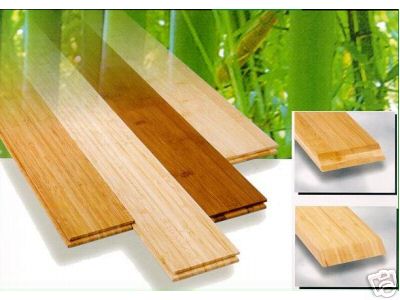

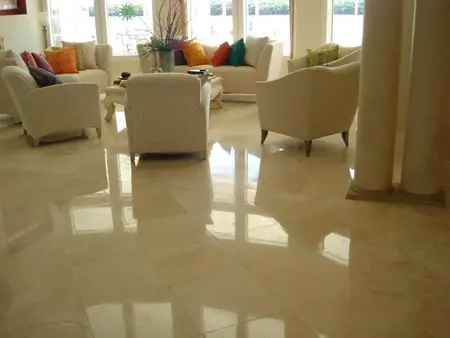
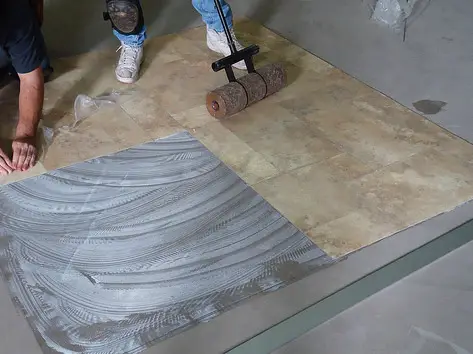



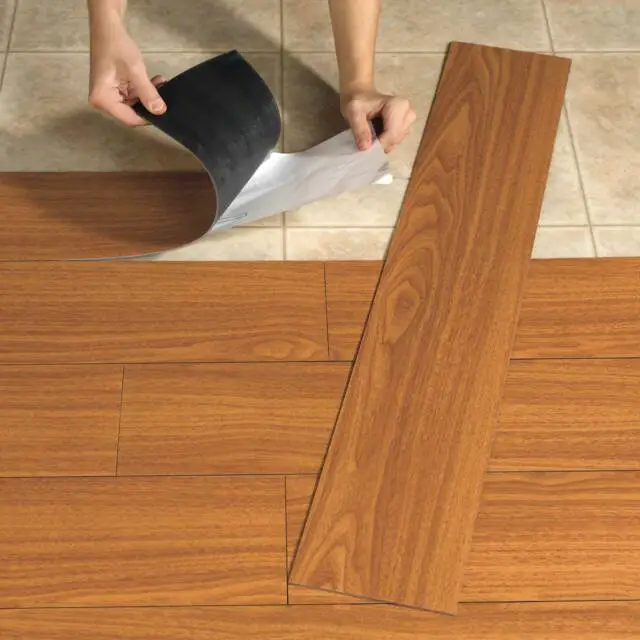


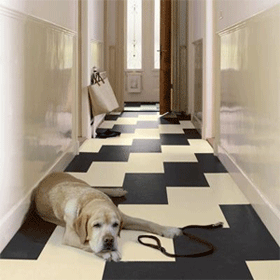
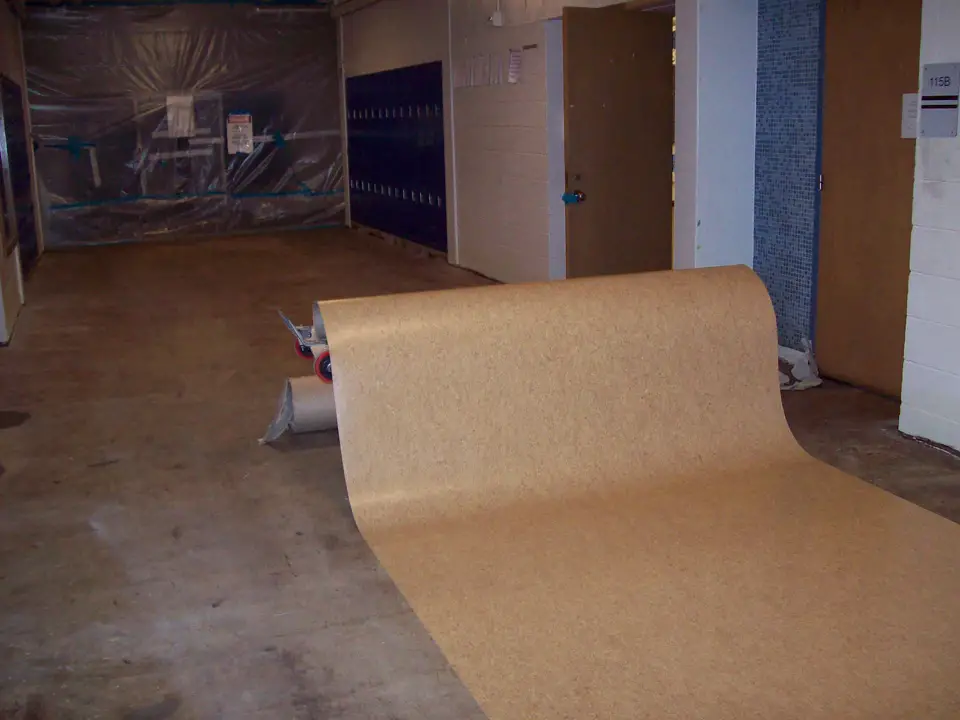
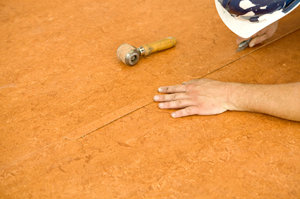

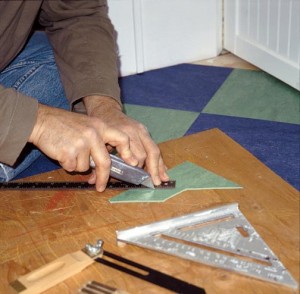
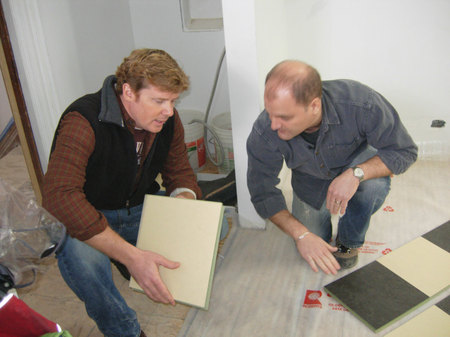


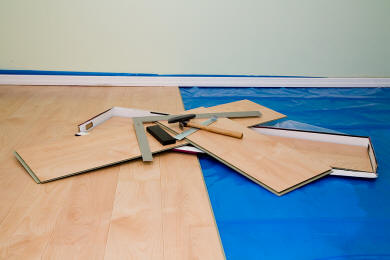

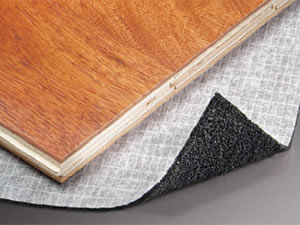



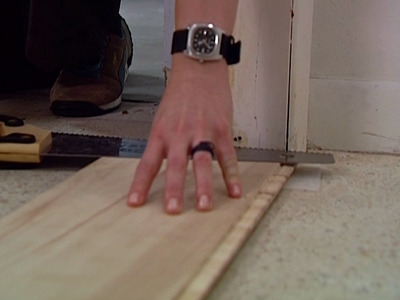

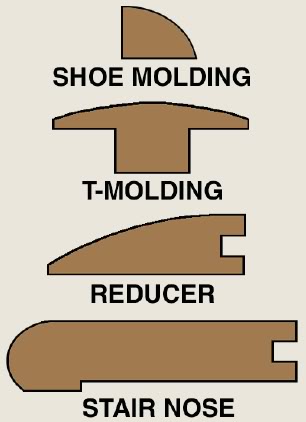
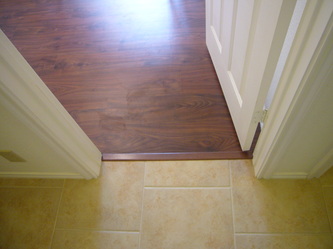
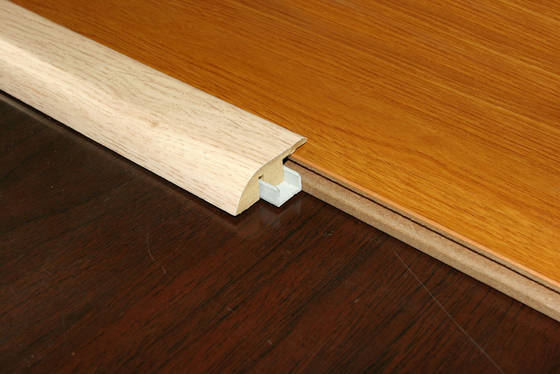


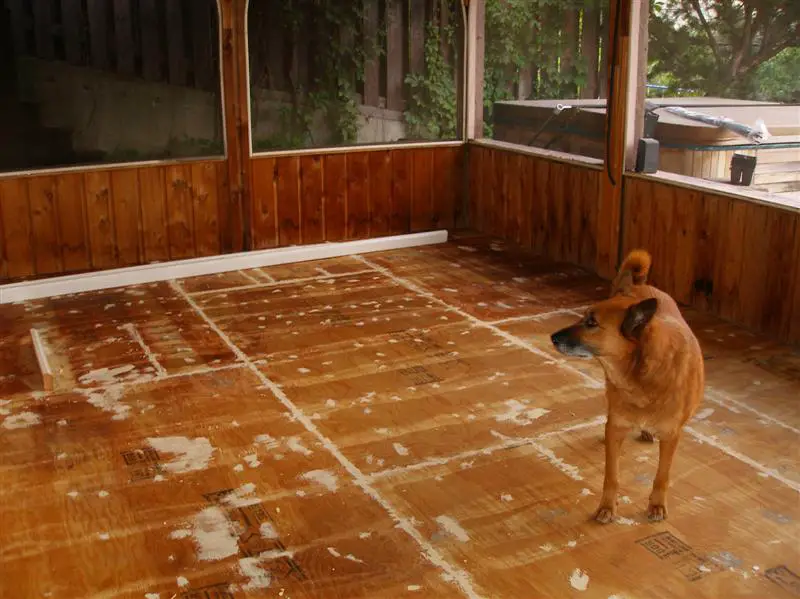
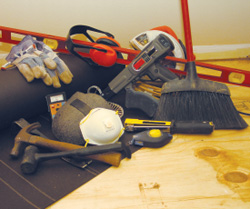
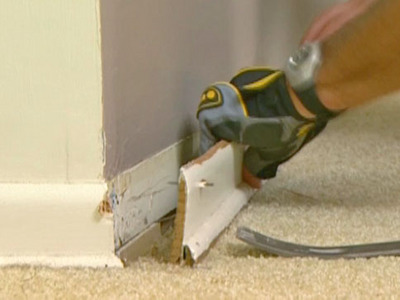
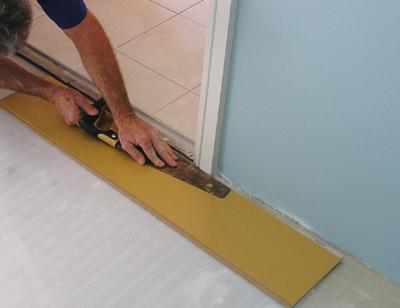





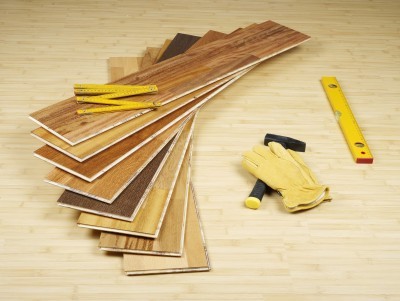 Again, don’t forget to check the manufacturer’s instructions before doing anything. Be sure to have the complete tools, some of which were mentioned earlier.
Again, don’t forget to check the manufacturer’s instructions before doing anything. Be sure to have the complete tools, some of which were mentioned earlier.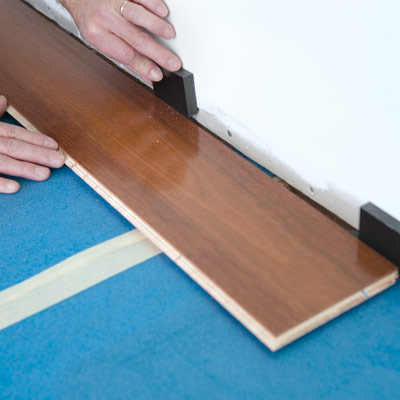



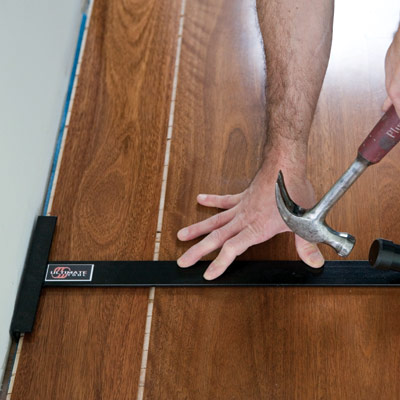

 There you have it, DIY hardwood flooring on a wood subfloor. Be sure to keep excess planks for future repairs and be sure to care for hardwood flooring to enjoy its rewarding comfort for years and years ahead.
There you have it, DIY hardwood flooring on a wood subfloor. Be sure to keep excess planks for future repairs and be sure to care for hardwood flooring to enjoy its rewarding comfort for years and years ahead.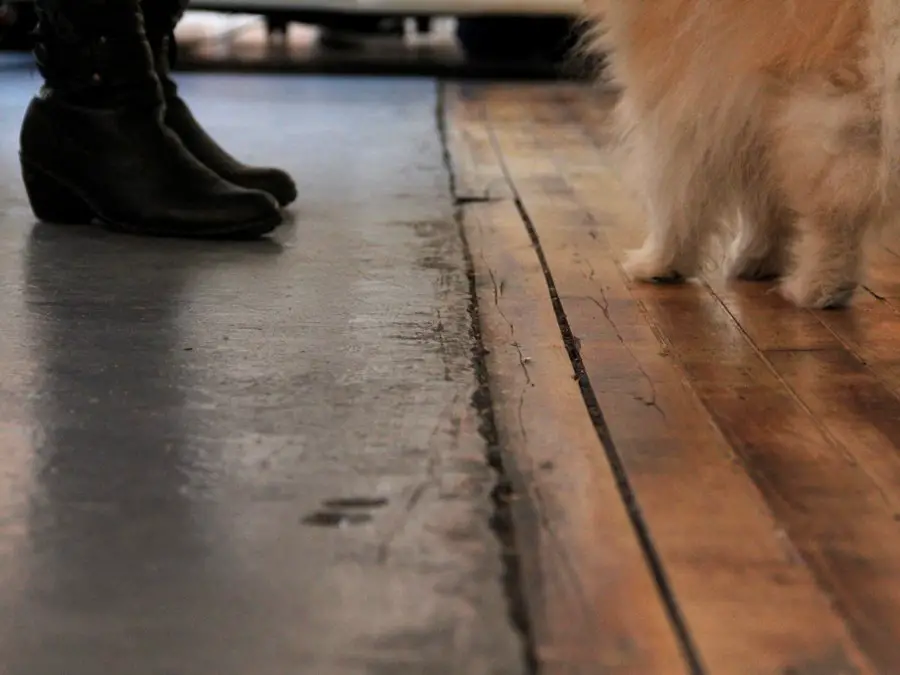 Yes, with the right preparation, cheap concrete subfloors are not just for basements anymore and it can work all throughout the house.
Yes, with the right preparation, cheap concrete subfloors are not just for basements anymore and it can work all throughout the house. Before installing the flooring planks, be sure to that the joists are in good condition and structurally sound as it will support the weight of the hardwood flooring and everything above it.
Before installing the flooring planks, be sure to that the joists are in good condition and structurally sound as it will support the weight of the hardwood flooring and everything above it. Treated Plywood. Over the last 30 years, using treated plywood has been a popular way to install hardwood flooring over concrete slab sub flooring. No, we don’t directly put the ¾” treated plywood over the bare concrete subfloor of course. We need to lay down underlayments first and ensure that the subfloor is free from moisture.
Treated Plywood. Over the last 30 years, using treated plywood has been a popular way to install hardwood flooring over concrete slab sub flooring. No, we don’t directly put the ¾” treated plywood over the bare concrete subfloor of course. We need to lay down underlayments first and ensure that the subfloor is free from moisture.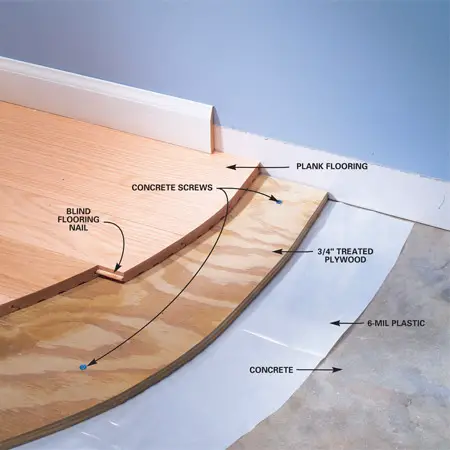 One more thing to keep in mind using the 3 methods we mentioned earlier is that they would significantly raise the height of the resulting floor. So if you are renovating a room or this is an entirely new project, you might want to check the doorways and furniture.
One more thing to keep in mind using the 3 methods we mentioned earlier is that they would significantly raise the height of the resulting floor. So if you are renovating a room or this is an entirely new project, you might want to check the doorways and furniture. Continue doing so and be sure to stagger each flooring plank choosing hardwood flooring products from different boxes for a unique pattern. Apply builder’s tape on the planks so that they will be pulled tight and dry well. Doing this would also prevent them from slipping or being misplaced. Remember to allot space for the expansion gap.
Continue doing so and be sure to stagger each flooring plank choosing hardwood flooring products from different boxes for a unique pattern. Apply builder’s tape on the planks so that they will be pulled tight and dry well. Doing this would also prevent them from slipping or being misplaced. Remember to allot space for the expansion gap. Floating Floors. To demystify, floating floors are called as such for the simple reason that the hardwood flooring installed is not directly attached to the subfloor. Recent advances in manufacturing flooring boards and planks have given way to precision cutting, more accurately that the latest generation of hardwood, both engineered and solid and other wood-based flooring products like cork, bamboo and laminate have pristine click-lock technology enabling glueless locking.
Floating Floors. To demystify, floating floors are called as such for the simple reason that the hardwood flooring installed is not directly attached to the subfloor. Recent advances in manufacturing flooring boards and planks have given way to precision cutting, more accurately that the latest generation of hardwood, both engineered and solid and other wood-based flooring products like cork, bamboo and laminate have pristine click-lock technology enabling glueless locking. In the earlier days, of course glue was applied not to the subfloor but to the tongue and groove to secure each plank. These days though, that is seen less and less.
In the earlier days, of course glue was applied not to the subfloor but to the tongue and groove to secure each plank. These days though, that is seen less and less. To maintain the beauty of your hardwood flooring, be sure to clean it regularly and make sure repairs are done correctly.
To maintain the beauty of your hardwood flooring, be sure to clean it regularly and make sure repairs are done correctly. Again, it wouldn’t hurt to read manufacturer’s instructions for the flooring product before you begin preparation so that you’ll know immediately if there are specific requirements you need to achieve or comply with. At the same time, also check the local building codes in your area to avoid inconvenience.
Again, it wouldn’t hurt to read manufacturer’s instructions for the flooring product before you begin preparation so that you’ll know immediately if there are specific requirements you need to achieve or comply with. At the same time, also check the local building codes in your area to avoid inconvenience.






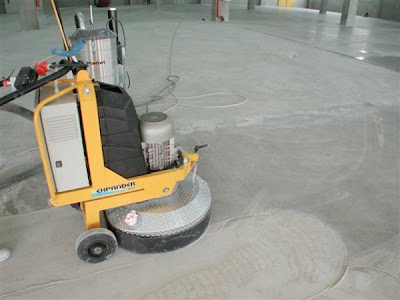

 That should get us ready to install your hardwood flooring on a concrete subfloor.
That should get us ready to install your hardwood flooring on a concrete subfloor.